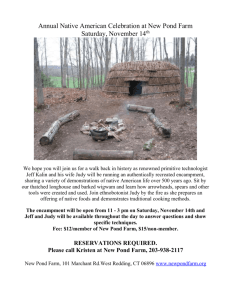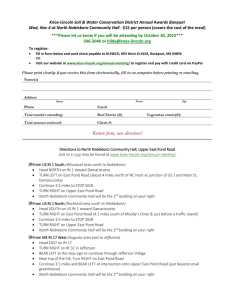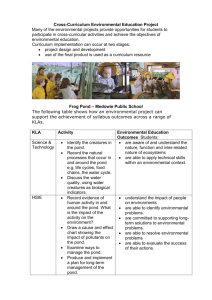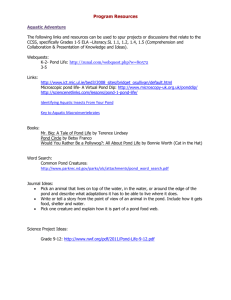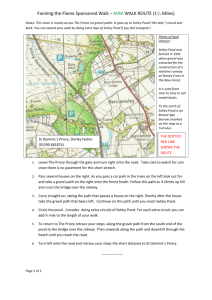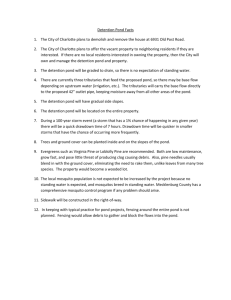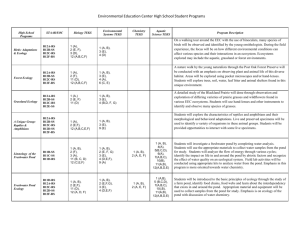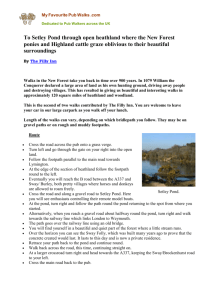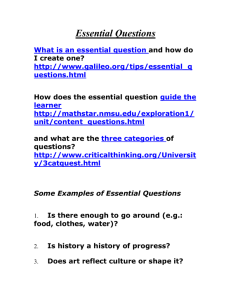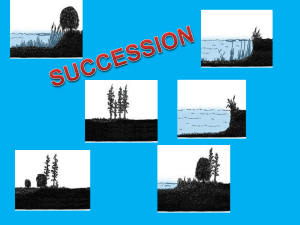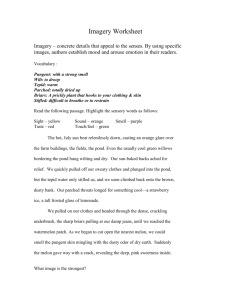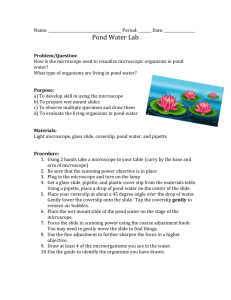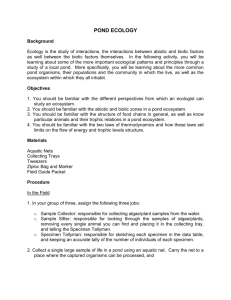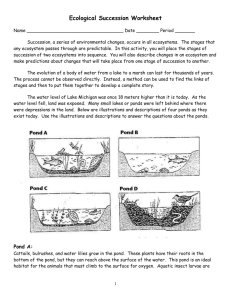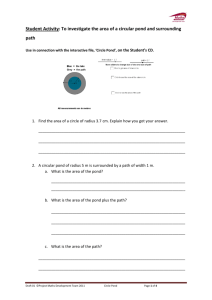Plant Animal Interdependence
advertisement
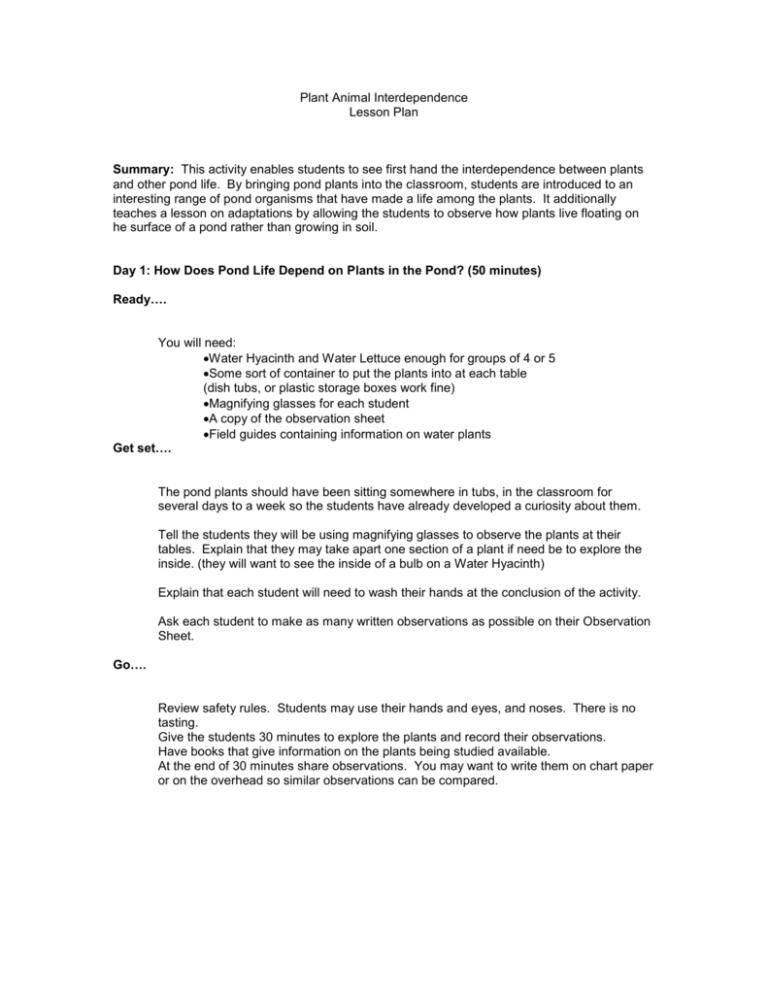
Plant Animal Interdependence Lesson Plan Summary: This activity enables students to see first hand the interdependence between plants and other pond life. By bringing pond plants into the classroom, students are introduced to an interesting range of pond organisms that have made a life among the plants. It additionally teaches a lesson on adaptations by allowing the students to observe how plants live floating on he surface of a pond rather than growing in soil. Day 1: How Does Pond Life Depend on Plants in the Pond? (50 minutes) Ready…. You will need: Water Hyacinth and Water Lettuce enough for groups of 4 or 5 Some sort of container to put the plants into at each table (dish tubs, or plastic storage boxes work fine) Magnifying glasses for each student A copy of the observation sheet Field guides containing information on water plants Get set…. The pond plants should have been sitting somewhere in tubs, in the classroom for several days to a week so the students have already developed a curiosity about them. Tell the students they will be using magnifying glasses to observe the plants at their tables. Explain that they may take apart one section of a plant if need be to explore the inside. (they will want to see the inside of a bulb on a Water Hyacinth) Explain that each student will need to wash their hands at the conclusion of the activity. Ask each student to make as many written observations as possible on their Observation Sheet. Go…. Review safety rules. Students may use their hands and eyes, and noses. There is no tasting. Give the students 30 minutes to explore the plants and record their observations. Have books that give information on the plants being studied available. At the end of 30 minutes share observations. You may want to write them on chart paper or on the overhead so similar observations can be compared. Day 2: How do other species depend on plants to survive? (50 minutes) Ready…. You will need: A copy of the book McCrephy’s Field by Christopher Myers ISBN 0395538076 Multiple copies of Salamander Rain by Kristen Joy Pratt-Serafini ISBN 1584690178 Copies of the Plant – Animal Interdependence handout Set…. Explain that, “ Previously we explored the dependence of pond life on pond plants. Today we will be learning more about pond plants, and will in addition study the dependence of many different species on plants. We will also see how the plants can depend on other species for their survival.” Go…. Read the book McCrephy’s Field to the class. As you read the book discuss how the various animals and birds need the plant life in the field to survive. Also discuss how the birds and insects benefit the plants. Fill out the chart with the students using either an overhead copy of the chart or an enlarged copy on chart paper. In groups of 2 or 3 allow the students to share copies of Salamander Rain. Have them make additional entries on their chart from the information in the book. Days 3-4 or 3-5: What have you found to be the most interesting animal dependence on plants? (50 minutes each day) This is the evaluation portion of the lessons. Ready… On day 1, if your area is suitable you can take your class on a walk to observe any evidence of animal use of plants (nests, galls, evidence of insects on leaves etc.) You will need: a set of books from the library on animals found in the Ohio area construction paper, glue, scissors, copies of paper on which to write what the student has discovered about how the animal they chose depends on plants. Get Set…. Have the students assemble the equipment they will need for this activity. Explain that they will be creating a graphic representation of how the organism they choose depends on plants to survive. If applicable they should also point out how the organism contributes to the plants survival. They will be assessed on their visual representation and written description of their triarama. Go…. Have the students explore the books and research the species they are interested in. Have them write a rough draft, for your approval, of what they have learned about the survival needs of their choice. When you students are becoming ready for the next step, demonstrate how to make a triarama. to make a triarama take a 12”x12” square of construction paper and fold it diagonally in both directions so you have formed a 8”x 8”x 12” triangle. Have the students open their paper and place it on their desk so that it is a rhombus (diamond). The student should cut one fold up to the middle fold. This allows one side of the paper to slide under the other and you have a triangle that stands up for display purposes. Using their books and supplies the students are to create a display showing the species they have chosen using plants. Upon completion of their display they should make a final copy of their research and attach it to the display.




